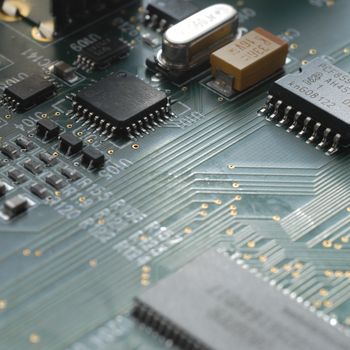
To prevent solder from bridging conductive traces and causing short-circuits, while undergoing the soldering process printed circuit boards (PCBs) are coated with a non-conductive lacquer to which solder will not adhere. This ‘solder mask’ also safeguards the board’s circuitry against environmental influences and improves electric strength. With so much depending on this important layer, it is obvious that its quality should be monitored during manufacture.
Traditionally green in color, solder resist (often epoxide resin) was originally developed for facilitating wave soldering processes: not only to prevent unintended solder bridges but also to restrict the solder to just the electrical contacts, thereby reducing overall solder consumption. Today, even when other techniques are used, a solder resist layer is still indispensable for permanently protecting the delicate copper traces from wear, heat and moisture, as well as for insulating the PCB’s circuitry. The thickness of the solder mask is essential to its functionality and must therefore be controlled during production.
Determining the thickness of the solder resist layer implies measuring a non-conductive coating on top of copper – a clear case for using the amplitude sensitive eddy current method. Because the thickness of the covered copper layers can vary widely, one should use a high frequency probe with a low eddy current depth.
For exactly such applications, FISCHER has developed the FTA3.3-5.6HF probe. Its high frequency (20 MHz) makes a 30µm thick copper substrate sufficient to reach optimum results. If measurement uncertainties of 10-15% are acceptable, even coatings on top of copper traces only 18µm thick can be measured with this probe.
Due to the lateral expansion of the FTA3.3-5.6HF’s eddy current field, the measurement spot must be at least 5-6 mm in diameter to avoid edge effect influences on the measurement results.
To check the thickness of solder resist lacquers on PCB copper, FISCHER’s high frequency probe FTA3.3-5.6HF is ideal. The probe can be used equally well with the handheld ISOSCOPE® and DUALSCOPE® instruments of the FISCHER FMP family or with the FISCHERSCOPE® MMS® PC2 bench-top unit. Please contact your local FISCHER representative for further information.